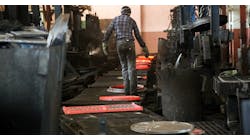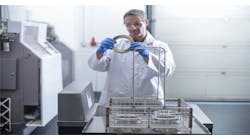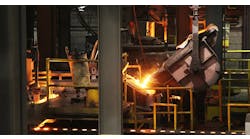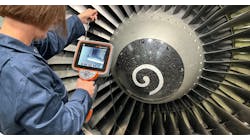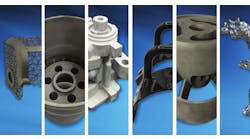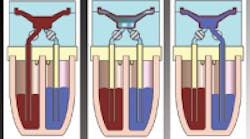The Cast-Decant-Cast process will be producing prototype castings by September 1, in its first commercial installation at Eck Industries in Wisconsin.
Eck Industries has licensed an emerging casting technology developed to produce near-net-shape components from two different alloys in a single, multi-stage casting process. The CDC (Cast-Decant-Cast) process was developed by Dr. David Browne and colleagues at Ireland’s University College Dublin. NovaUCD, the Innovation and Technology Transfer Centre at the university, granted the non-exclusive license.
Dave Weiss, v.p. of Sales and Engineering for Eck Industries, states: “The CDC process will allow Eck to meet our customer’s requirements of having dramatically different properties and performance at different locations within a single casting.”
While this would be the first commercial application of the CDC process, it is not an exclusive license, according to Weiss. He indicates that Eck aims to be producing prototype castings with the CDC method before September 1, using its existing equipment and systems.
The CDC process was described by Browne in a 2005 research paper as a process for casting metals “with a smooth gradient in concentration/microstructure, as opposed to a step change.”
In an abstract, Browne and colleagues outlined their development: “The procedure involves the introduction of the first liquid, alloy A, into a mold, allowing it to partially solidify against the mold walls, then decanting any unsolidified material, leaving a shell of alloy A against the mold wall. Alloy B is then introduced into the mold in a superheated state, partially remelting the inner layer of alloy A, thus mixing with it and forming a smooth gradient between alloys A and B.”
The developers indicated that CDC process had produced “functionally gradient components” with two different Al–Si alloys. It’s also been successful casting an aluminum alloy with an aluminum metal-matrix composite, and an aluminum alloy with a zinc alloy. In a release, NovaUCD stated the CDC process should be capable of producing castings from magnesium alloys, copper alloys, steels, and superalloys.
Manitowoc, WI-based Eck Industries is family-owned foundry that uses various shell and permanent mold processes to manufacture aluminum castings from 0.5 through 2,000 lb., in short runs and high volumes.

